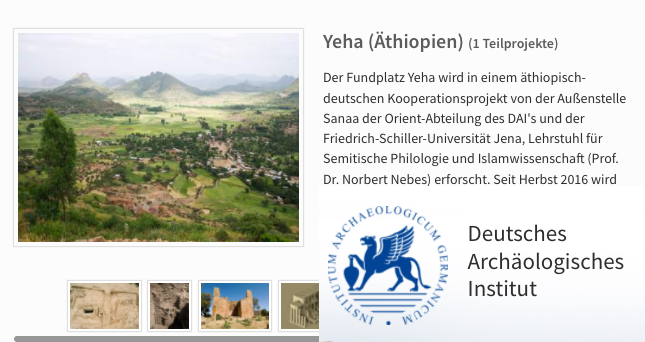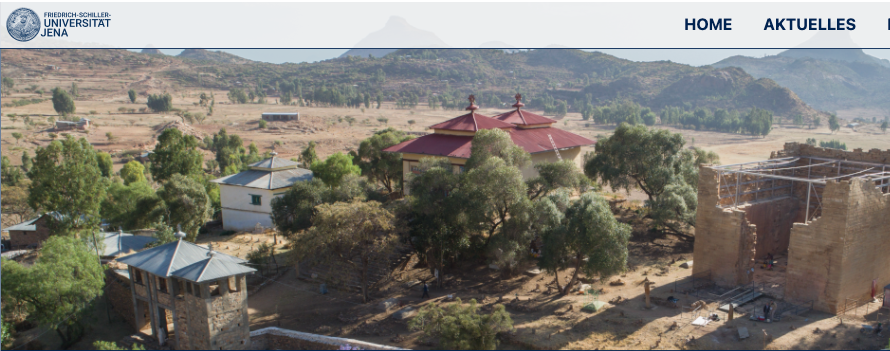Climate research in the northern Horn of Africa (Yeha and surroundings, Tigray/Ethiopia)
Since 2009 the Sanaa Branch of the Orient Department of the DAI has been focusing their research on the complex society that formed in the northern Horn of Africa in the early 1st millennium BC. The immigration of Sabaean populations from South Arabia to the northern Horn of Africa and their acculturation with the indigenous population led to the emergence of a so-called Ethio-Sabaean culture from the 9th century BC onwards. The central site is Yeha, 35 km east of Aksum. Studies on the palaeoenvironment of the Yeha region form an important part of the project as the environmental conditions had a direct influence on the formation of the new polity, as well as on the further development of the region.


Geological profiles are extremely important for the climate history in the northern Ethiopian highlands as they form important climate archives that also connect the known archives in Ethiopia and South Arabia. At the study sites in Yeha and the surrounding area, fluviatile sediments are exposed as profiles along recent wadis. The oldest profiles are c. 10,000 years old and the youngest date to the 1st century AD. They allow a reconstruction of the climate history, environmental conditions, and ecological changes over a long period of time.
So far, the sedimentation history for the 1st millennium BC indicates that conditions were more humid than today; three phases with increased precipitation can be assumed. Then, from about the 2nd century AD onwards, severe soil erosion set in.
Using various methods (pollen, clay mineral and sediment analyses, thin section and scanning electron microscope studies, isotope analyses, δ18O/δ13C analyses on mollusks and ostracods, uranium-thorium dating), sediments, especially from the wadi profiles, and also calcareous tufa crusts (fig. 5-6) are analyzed.
By evaluating the different climate data, the environmental conditions can be reconstructed in the different periods, which in turn can provide information on flora and (if possible) fauna in the study area and their corresponding changes. These methods allow insight into whether the area of Yeha was settled and used agriculturally before the Sabaean migration process. It must also be examined to what extent the intensive settlement of the region from the beginning of the Ethio-Sabaean period and the use of local resources (e.g. deforestation for building houses) led to environmental changes. Studies on possible adaptation mechanisms to climate change are another focus of the project.



Project members and partners
Dr. Christian Weiß (Tübingen-Erlangen)
Prof. Dr. Brigitta Schütt (FU Berlin, Fachbereich Geowissenschaften, Physische Geographie)
Yeha-Team der Außenstelle Sanaa unter der Leitung von Dr. Iris Gerlach als Gemeinschaftprojekt mit Prof. Dr. Norbert Nebes, Universität Jena (DFG-Langfristvorhaben)
Äthiopische Kooperationspartner des Yeha-Projektes: Authority for Research and Conservation of Cultural Heritages (ARCCH) und Tigray Culture and Tourism Bureau (TCTB)


